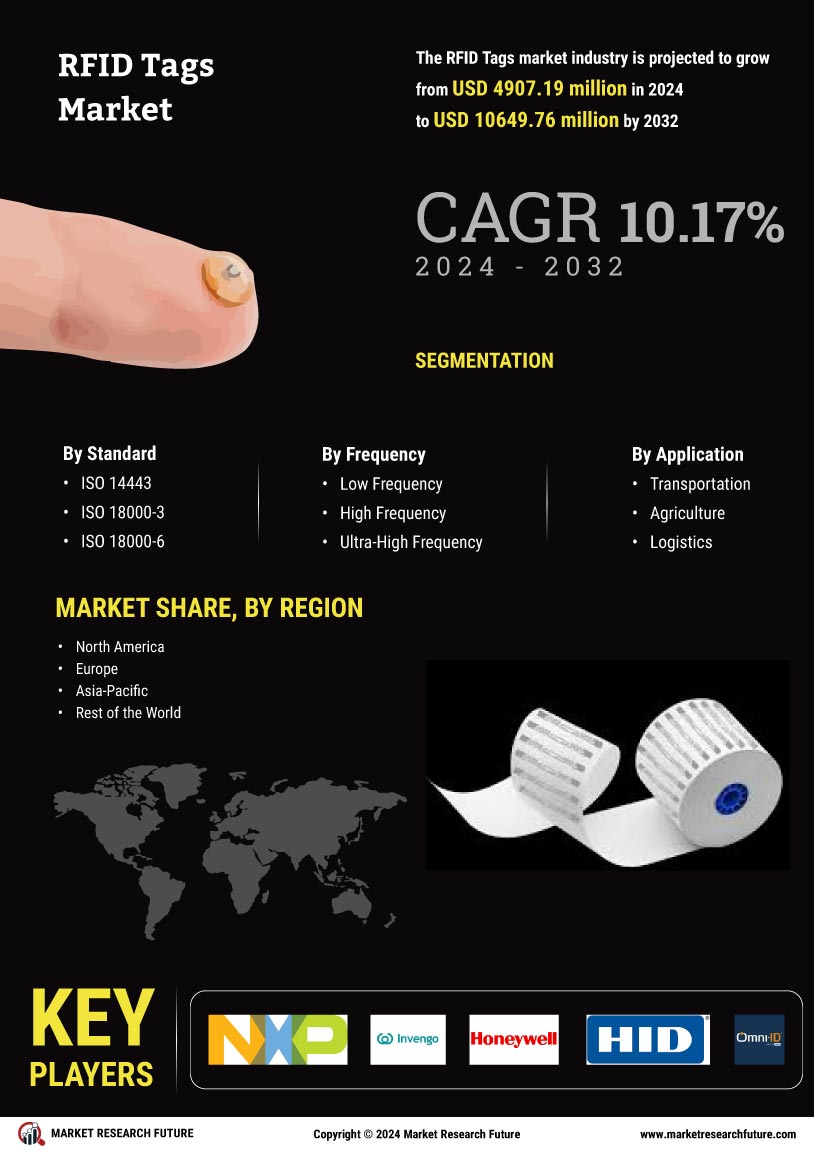Market Growth Projections
The Global RFID Tags Market Industry is poised for substantial growth, with projections indicating a market size of 13.1 USD Billion in 2024 and an anticipated increase to 28.5 USD Billion by 2035. This growth trajectory reflects a compound annual growth rate (CAGR) of 7.32% from 2025 to 2035. The expansion of RFID applications across various sectors, including retail, healthcare, and logistics, is likely to drive this growth. As industries continue to recognize the benefits of RFID technology in improving efficiency and accuracy, the market is expected to flourish, presenting numerous opportunities for stakeholders.
Regulatory Compliance and Standards
The Global RFID Tags Market Industry is influenced by the increasing emphasis on regulatory compliance and standards across various sectors. Governments and regulatory bodies are mandating the use of RFID technology for tracking and monitoring purposes, particularly in industries such as healthcare and transportation. For instance, regulations requiring the tracking of pharmaceuticals from production to distribution are driving the adoption of RFID tags. This compliance not only enhances safety and accountability but also propels market growth. As organizations strive to meet these regulatory requirements, the demand for RFID solutions is likely to escalate, further solidifying the industry's position.
Increasing Adoption of IoT Technologies
The Global RFID Tags Market Industry is experiencing a surge in demand due to the increasing adoption of Internet of Things (IoT) technologies. As industries integrate IoT solutions, RFID tags play a crucial role in enhancing connectivity and data collection. For instance, in supply chain management, RFID tags facilitate real-time tracking of goods, thereby improving operational efficiency. This trend is expected to contribute to the market's growth, with projections indicating a market size of 13.1 USD Billion in 2024. The integration of RFID with IoT systems is likely to drive innovation and create new applications across various sectors.
Technological Advancements in RFID Solutions
The Global RFID Tags Market Industry is propelled by continuous technological advancements in RFID solutions. Innovations such as the development of passive and active RFID tags, along with improvements in read range and data storage capacity, are enhancing the functionality of RFID systems. These advancements enable more versatile applications across various sectors, including logistics, healthcare, and retail. For instance, the introduction of RFID tags with improved battery life and miniaturization is expanding their usability in diverse environments. As technology evolves, the market is expected to witness sustained growth, aligning with the projected figures for the coming years.
Growing Demand for Inventory Management Solutions
The Global RFID Tags Market Industry is significantly influenced by the growing demand for efficient inventory management solutions. Retailers and manufacturers are increasingly utilizing RFID technology to streamline their inventory processes, reduce losses, and enhance customer satisfaction. For example, companies employing RFID systems have reported inventory accuracy rates exceeding 95 percent. This heightened efficiency not only reduces operational costs but also supports the projected market growth, with estimates suggesting a rise to 28.5 USD Billion by 2035. The ability of RFID tags to provide real-time data on stock levels is likely to be a key driver in this sector.
Enhanced Security and Anti-Counterfeiting Measures
The Global RFID Tags Market Industry is also driven by the need for enhanced security and anti-counterfeiting measures. Industries such as pharmaceuticals and luxury goods are increasingly adopting RFID technology to combat counterfeiting and ensure product authenticity. RFID tags can store unique identifiers that help verify the legitimacy of products throughout the supply chain. This trend is particularly relevant in sectors where brand integrity is paramount. As businesses recognize the value of RFID in safeguarding their products, the market is expected to grow at a CAGR of 7.32% from 2025 to 2035, indicating a robust future for RFID solutions.






















Leave a Comment